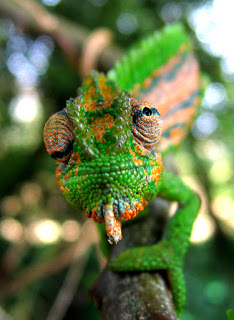if we can assume that eyes all basically work the same way, then we can look at specializations based on those accepted rules. basically, light enters the eye through the pupil/iris, passes through a lens, and is interpreted by the optic nerve via rods and cones. eyes also are self-protective, so they can let more or less light in, depending on the situations, and they have protective barriers around them (eyelids, supra-orbital bones, cheek bones, etc.).
so, consider a chameleon. they do change colour, which is cool (mostly to portray their intentions or levels of threat more than camouflage) but they also have those cool cone-shaped eyes that spin around independently. the cones are actually rigid eyelids which only allow the pupil to see the outside world. but the chameleon can move these around incredibly quickly granting it a 360 degree vision field. thus, it can track flying insects with ease (occasionally even catching birds in flight).
consider the common goat. their pupils are large, horizontal rectangles which allow them a 330 degree range of vision.
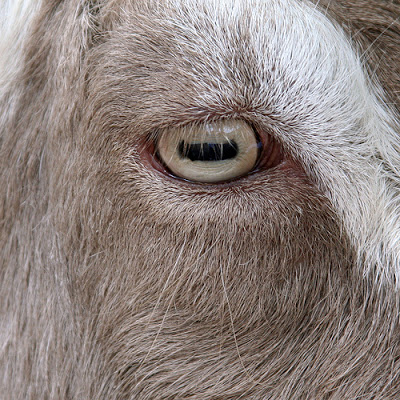 |
| wh-a-a-a-t are you looking a-a-a-t? |
consider the dragonfly. its eyes make it look like it’s wearing a helmet. their eyes are made up of 30,000 individual ommatidia, each containing its own lens and light-sensitive cells (rods and cones). thus, they have 360 degree vision and can perceive the slightest of movements. this helps them be one of the most efficient and deadly aerial hunters around.
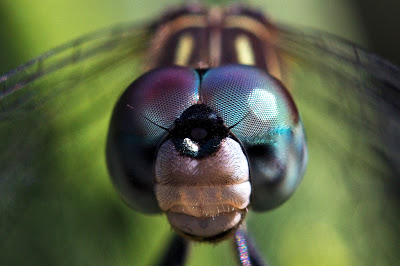 |
| nice eye-helmet |
consider bees. their compound eyes are filled with only cones for yellow, blue, and ultraviolet light. thus, they don’t so much see the different colours of the flowers but they do see the different UV patterns created by different types of pollen.
 |
| pollen vision |
consider birds which have many different types of rods and cones and can perceive many more colours than humans as well as ultraviolet light. birds are wonderfully colourful to us but so much more so to each other!
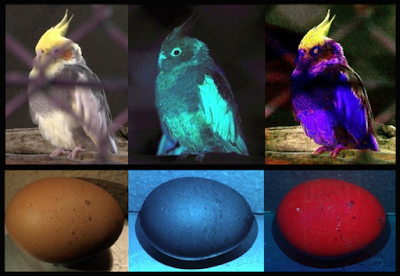 |
| human – UV – bird vison |
 |
| human – UV – bee – bird vison |
consider owls. they see almost everything at night due to the massive iris/pupils and tonnes of rods in their eyes. they can’t move their eyes but they can turn their heads nearly all the way around to track things. and, since their eyes and lens are flat (like eagles) they function something like telescopes — they can hardly see things up close but have amazingly clear vision at great distances.
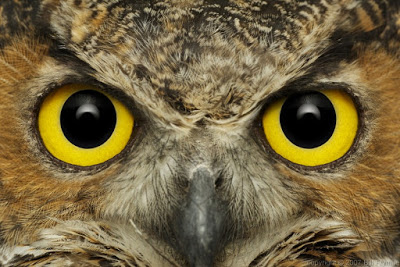 |
| great horned owl |
consider our beloved dogs. popular believe is that they only see in black and white when, in fact, they see in blue and yellow with a greater level of brightness discrimination. so, their vision is blurry and has a limited colour spectrum but they see very well at night and in bright light.
 |
| puppy-noculars |
i could go on and on about the many fascinating eyes in creation but i’ll stop now.
next week, we’ll take a look at the mantis shrimp which has, in my opinion, the coolest eyes of all!
so far on specialized eyes
BONUS: cool optical illusion:
 |
| you won’t believe you missed it when you see it |








